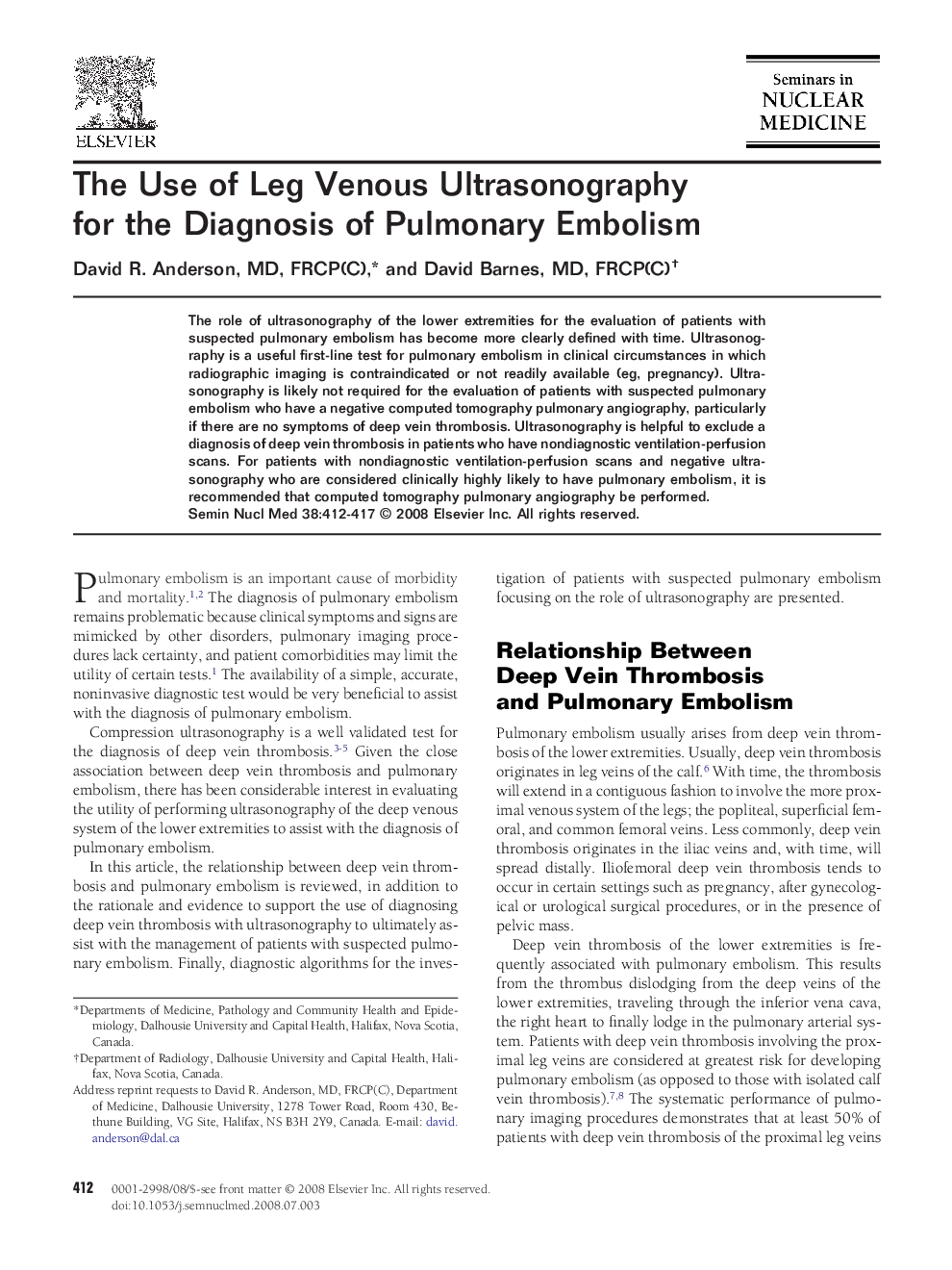| Article ID | Journal | Published Year | Pages | File Type |
|---|---|---|---|---|
| 4251219 | Seminars in Nuclear Medicine | 2008 | 6 Pages |
The role of ultrasonography of the lower extremities for the evaluation of patients with suspected pulmonary embolism has become more clearly defined with time. Ultrasonography is a useful first-line test for pulmonary embolism in clinical circumstances in which radiographic imaging is contraindicated or not readily available (eg, pregnancy). Ultrasonography is likely not required for the evaluation of patients with suspected pulmonary embolism who have a negative computed tomography pulmonary angiography, particularly if there are no symptoms of deep vein thrombosis. Ultrasonography is helpful to exclude a diagnosis of deep vein thrombosis in patients who have nondiagnostic ventilation-perfusion scans. For patients with nondiagnostic ventilation-perfusion scans and negative ultrasonography who are considered clinically highly likely to have pulmonary embolism, it is recommended that computed tomography pulmonary angiography be performed.
